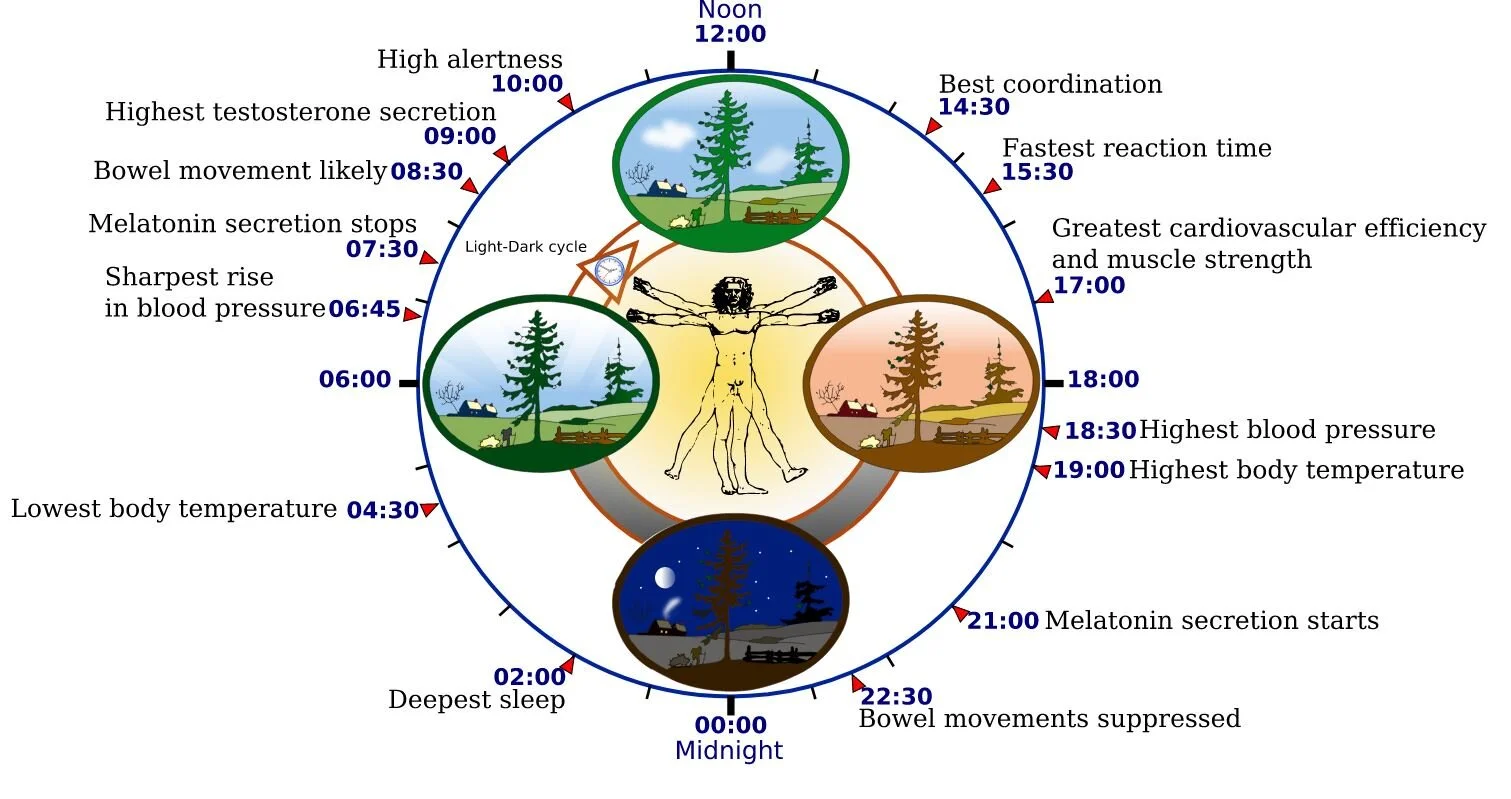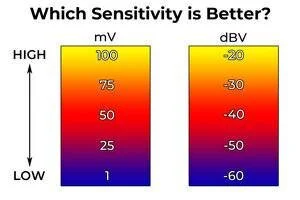Can You Meditate to Nature Sounds?
Nature sounds are some of the most soothing sounds on the planet. Find out how to use them with meditation in this article.
Many people wonder if nature sounds are good for meditation. Before I answer that question, lets quickly look at what makes a good meditation sound.
What Makes a Good Meditation Sound?
Soothing to listen to. Jarring, loud or abrupt noises will signal a stress response from your body, taking you out of your state of deep relaxation.
Doesn’t repeat. Our brains are amazing at finding patterns. When listening to looping sounds, your brain will eventually memorize them. This can be annoying and distracting, robbing you of the ability to truly “lose yourself” in the sound.
Overpowers environmental noise. While it is possible to meditate anywhere, most people find it easiest when distractions are limited. Listening in a quiet environment, or with good headphones, limits distractions and creates space for deep meditations.
Nature sounds check all these boxes.
This article dives deep into discovering why natural sounds are so relaxing and how we can use them as a tool for meditation, health and enjoyment.
For navigational purposes, feel free to jump to any section that interests you below. Click the “TOP” button in the bottom-right corner to return to the table of contents.
Table of Contents:
Why Nature Sounds are Best for Meditation
Benefits of Nature Sounds
How to Meditate to Nature Sounds
What you Need to Meditate to Nature Sounds
Conclusion + Free Sounds
Why Nature Sounds are Best for Meditation
Never repeat themselves
Promote external thinking (get you out of your own head)
Communicate on a cellular level with our bodies
Activates parasympathetic nervous system
Reduces stress and anxiety
Natural environments have many sonic elements including wildlife, water, wind, weather and more. Together, they blend together, forming a landscape of sound unique to that environment.
These sonic landscapes never repeat and contain just the right mix of sounds to detach from your mundane, “thinking” mind, so you are free to experience higher thoughts and experiences. It’s no wonder that Einstein and Tesla got so many ideas while walking in nature.
But we all already know this.
For most people, the sounds of nature rank among the most relaxing sounds on the planet. Take a moment to think about what your most relaxing sound is, that one sound that allows you to turn off your thinking mind and enjoy the simple peace in just being.
I’m willing to bet that your sound is a natural one.
Is it rain drops gently drumming against a window? Delicate bird melodies in the morning? Crashing ocean waves on the beach? Rustling leaves in the wind?
Can you feel tranquility embracing you just from reading about those sounds? Me too.
This response is natural and is actually hard-coded into our biology.
Natural Sounds Speak to our DNA
Our circadian rhythm is a 24-hour biological clock that dictates internal functions in response to our outer environment.
You may be familiar with circadian rhythm and how it functions as an internal clock. It tells our bodies when to wake up and when to go to sleep. Light is thought to drive this cycle, but sound also plays a role.
To fully understand the origins of our circadian rhythm, we must travel back in time.
Before the comforts of social media, the internet and even electricity, we lived in nature. Living in connection with nature allowed us to “tune-in” to natural cycles. Patterns expressed as sights, sounds and smells allowed us to understand and to predict our surroundings.
Through observing nature, we gained foresight to danger, weather events, food edibility, fruit ripeness, the changing seasons and more. These predictions were critical to our survival as a species. As such, the language of nature was passed down through tradition and genetics.
We have largely lost the teachings of our ancestors, but our genes still carry some of nature’s language. This information is most often referred to as “survival instincts.” When encountering specific sights, sounds or smells, our sympathetic nervous system becomes activated as we prepare to protect ourselves.
Sympathetic Nervous System Response:
Fight or Flight
Prepares for Action
Increases Heart Rate
Increases Respiration Rate
Releases Energy
Slows Digestion
Some circumstances that elicit a sympathetic response are learned, and therefor, not part of our DNA (parental conditioning, traumatic events, PTSD). Other sympathetic responses are caused by underlying mental health disorders and are also not part of our DNA (stress, depression, anxiety).
However, there are circumstances that naturally cause our bodies to prepare for action that are encoded in our DNA.
A recent study determined that babies naturally fear snakes and spiders. Because babies do not have their own experiences to substantiate this fear, patterns resembling snakes and spiders must be hardwired in our cells.
Not only can the natural world prime us for action, it can also our lower stress levels, treat anxiety and depression, and repair our bodies.
A 2010 study found that nature sounds helped test subjects calm down fastest after a stressful event. The other tested recovery sounds were ambient noise, and high and low-noise road traffic sounds. Each sound was played for 4 minutes, suggesting that listening to nature sounds for only 4 minutes a day can help lower stress levels and activate the parasympathetic nervous system.
Parasympathetic Nervous System Response:
Rest and Digest
Conserves and Restores
Slows Heart Rate
Slows Respiration Rate
Stores Energy
Increases Digestion
When our parasympathetic nervous system is activated, we are in a state of relaxed alertness. We are completely grounded and aware of our surroundings, fully experiencing the present moment. This state of being slows down our bodies, conserves energy, and even speeds up healing times.¹⁻²
We’ve known since the 1980s that patients with a window facing green spaces heal faster than those without a window or one that looks out on an urban landscape. We are now discovering that the sounds of nature hold equal value.
Studies conducted in 2003, 2011 and 2012 all demonstrated that listening to natural soundscapes can decrease pain, alleviate anxiety and improve post-surgery recovery times.³⁻⁴⁻⁵
Benefits of Nature Sounds
Lowers stress levels
Reduces anxiety
Promotes external thinking
Strengthens circadian response
Activates parasympathetic nervous system
How to Meditate to Nature Sounds
Set an intention. Before you start, think about what your goal is for the meditation? Do you want to become more present, release stressful thoughts or worries, become more in-tune with your body or do you want explore your inner psyche?
Whatever it is, make it clear. Writing your goal down or speaking it aloud adds more power to your intention, making it more easily achievable.
Create a distraction-free space. Chose an area you are comfortable in with no distractions. Turn off your phone, TV, computer, radio and any other devices that may interrupt your meditation.
Find a comfortable position. Sitting cross-legged is the stereotypical position for meditation but it may not be comfortable for you. There are many options to chose from and there is no “best” position. Go with whatever works for you. Personally, I like sitting on my heels with a yoga block under me, or lying on my back.
Start your nature sounds. If you need some nature sounds, click here to see my playlist at the bottom of this article. Play your sounds through speakers or headphones.
Recenter as necessary. If you become aware that your thinking mind has taken over, take a deep, grounding breath into your belly to bring your being back to center on your intention. The more you meditate, the less often these mundane thoughts will distract you.
What You Need to Meditate to Natural Sounds
Sounds. This one goes without saying.
Speakers or Headphones. Out of these two options, I think headphones are best. Most people already own a pair and they will help to isolate you from your environment, limiting any distractions and making it easier to focus on pure nature sounds.
Safe Space. Considering you will be sitting down, absorbed in sound and possibly with your eyes closed, you’ll want to make sure that your location is safe for these vulnerable conditions.
Headphone Recommendations
Factors to consider when shopping for meditation headphones:
Wired vs. Wireless - Wired headphones tend to transmit a lot of low frequency noise from the wires rubbing against each other and against your clothing. I had a pair of wired Sony earbuds and this drove me crazy. Instead of relaxing, I found myself getting upset with the noise.
Having said that, I have found a wired pair of headphones that does not do this (see below). However, they are still limiting if you want to add any movement to your meditation (yoga, Qigong, etc). Feeling the tug of your headphones while stretching can take you out of your zen mode.
Comfort - Comfort is extremely important for meditation headphones. The best headphones will be so comfortable, you’ll forget you’re even wearing them. Generally speaking, over-ear style headphones with large ear cups tend to be the most comfortable. However, user preference plays a huge role here. My favorite styles are ear buds and in-ear-monitors.
Noise Cancellation - This is a nice feature if you meditate somewhere with noise that is out of your control (city, neighbors, dogs, roommates, etc). Noise cancellation is measured in decibels. A larger negative number means more noise cancellation, making you feel more isolated from the sounds of your surrounding environment.
Best Wireless Ear Buds
Apple AirPods Pro
The AirPods Pro from Apple offer great noise cancellation and comfort for in-ear headphones.
They are very light weight and do not put any pressure on the ear. This will make it easy to forget you’re wearing them.
They include three sizes of silicon tips to help you find your ideal fit.
In comparison to the 2019 Apple AirPods 2, the Pros have better sound reproduction, better noise cancellation and longer battery life. They are also slightly smaller and lighter than the previous model.
Specs:
-23.01 dB noise cancellation
In-ear design
Truly wireless
Best Over Ear Headphones
Bose QuietComfort 35 II
The Bose QuietComfort 35 II headphones offer superb noise cancellation, maximum comfort and very accurate sound reproduction.
At -27.01 dB noise cancellation, the Bose QC 35 II ranks among the best headphones for noise attenuation.
The ear cups and the headband are well padded and very comfortable for long listening sessions. Additionally, they are surprisingly lightweight for over-ear headphones at only 8.3 oz.
Specs:
-27.01 dB noise cancellation
Over-ear design
Wireless
Best Budget Pick
Amazon Echo Buds
The Echo Buds from Amazon are some of the cheapest, truly wireless headphones with active noise cancellation available.
They come with three different sizes of tips and three different sized stability fins to find the most optimal fit for you. They do enter deep into the ear canal, so if you don’t like the fit of in-ear headphones, these are not for you.
On just a single charge, these will last an impressive 32 hours.
Specs:
-23.86 dB noise cancellation
In-ear design
Truly Wireless
Best Wired Headphone
KZ AS10 In-Ear-Monitors
The KZ AS10 headphones are engineered for drummers. Because of this, they are designed for maximum noise cancellation.
These are the headphones that I use for everything from meditation to monitoring my field recordings.
They are wired, but the coating transmits very little noise when rubbing. I do not find this distracting as it is so minimal, the sound playing through the headphones easily overpowers the noise.
Most people have never worn in-ear-monitor before and they are certainly not for everyone. If you enjoy using in-ear buds and are used to that fit style, I recommend giving these a try for superior noise cancellation.
Specs:
-28.3 dB noise cancellation
In-ear-monitor
Wired
Conclusion + Free Nature Sounds
So the next time you sit down to meditate, give yourself the advantage of listening to nature sounds. You will naturally boost your mood, lower your stress and generate delta brain waves perfect for deep meditations :)
I have a playlist on my Sound Cloud of all my long nature recordings. Each one is at least 10 minutes in length and some are over 20 minutes. If you are interested, you can listen below ↓
Support Acoustic Nature
If you enjoyed this post and would like to help support Acoustic Nature, please consider "buying me a coffee" or becoming a Patreon with the buttons below.
As a thank you for your support, Patreon supporters receive a copy of Field Recording For Beginners, exclusive access to the full Behind The Sounds video series, nature sound library downloads, and more.
If you are unable to support the site financially, please share this post with others, or leave a comment below letting me know you enjoyed this post! Both are free and help the website grow. Thank you ♫
Thanks for reading,
-Jared
Read Next:
References:
Gould van Praag, C. D., Garfinkel, S. N., Sparasci, O., Mees, A., Philippides, A. O., Ware, M., Ottaviani, C., & Critchley, H. D. (2017). Mind-wandering and alterations to default mode network connectivity when listening to naturalistic versus artificial sounds. Scientific Reports, 7(1).
Alvarsson, J. J., Wiens, S., & Nilsson, M. E. (2010). Stress Recovery during Exposure to Nature Sound and Environmental Noise. International Journal of Environmental Research and Public Health, 7(3), 1036–1046.
Diette, G. B., Lechtzin, N., Haponik, E., Devrotes, A. & Rubin, H. R. Distraction therapy with nature sights and sounds reduces pain during flexible bronchoscopya. Chest123, 941–948 (2003).
Bauer, B. A. et al. Effect of the combination of music and nature sounds on pain and anxiety in cardiac surgical patients: a randomized study. Altern. Ther. Health Med.17, 16–23 (2011).
Chaing, L.-C. The effects of music and nature sounds on cancer pain and anxiety in hospice cancer patients (Doctoral Thesis) (Case Western Reserve University, 2012).



















